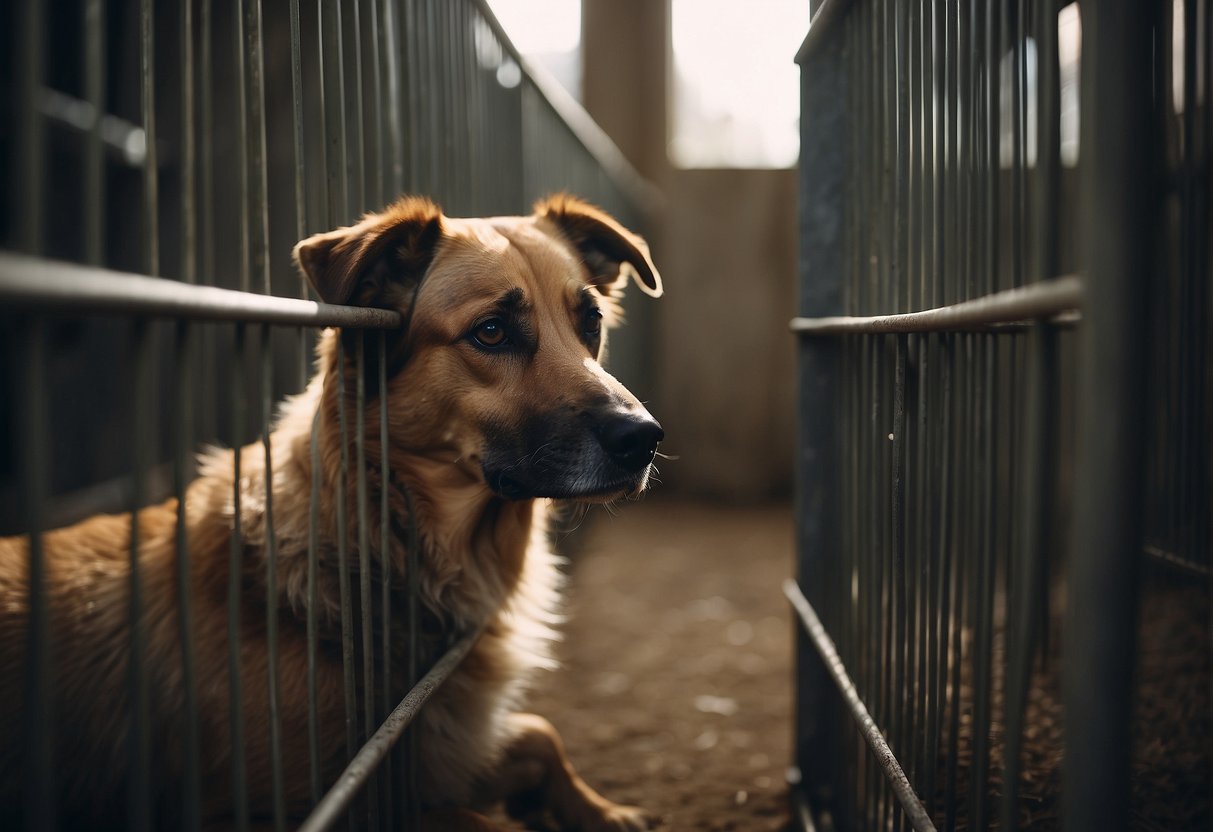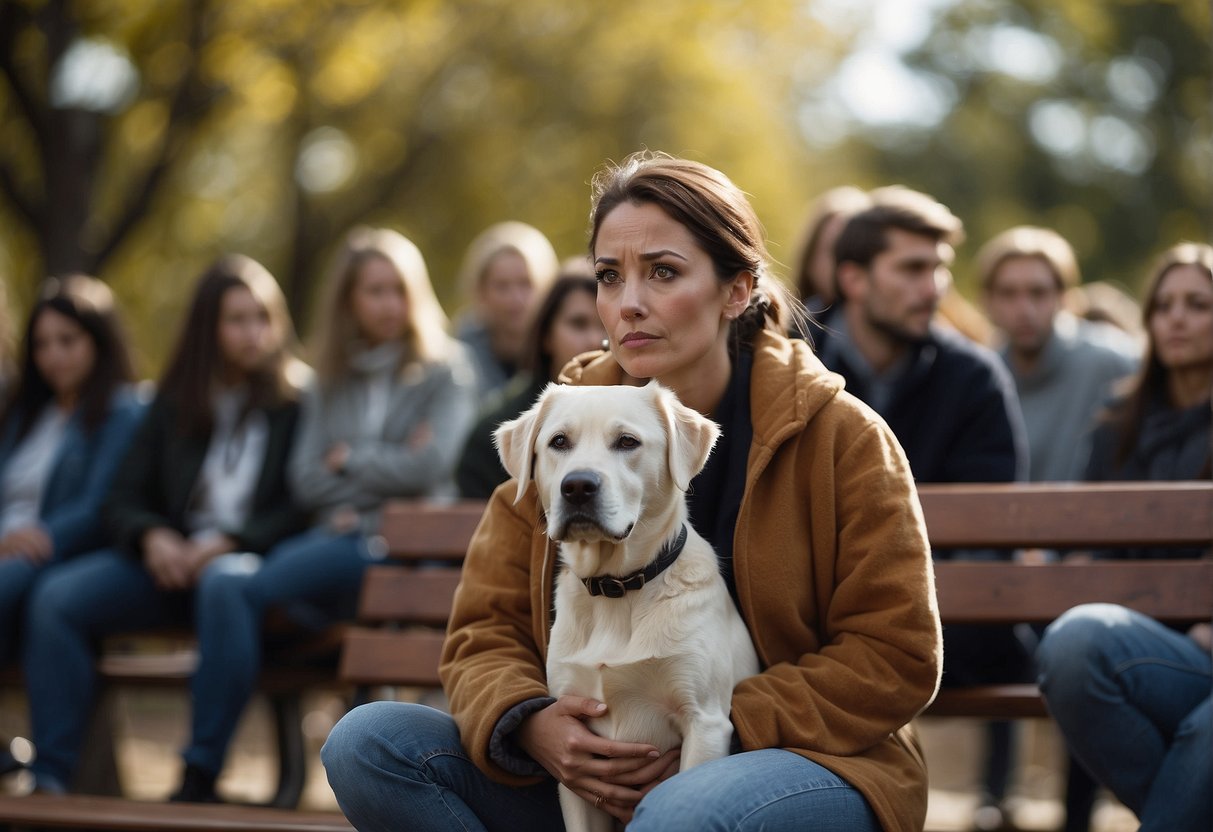Getting rejected during the dog adoption process can be a surprising and emotional experience, especially when you’re looking forward to the joy of adding a new companion animal to your life. It’s natural to feel a mix of disappointment, confusion, and even a bit of heartache. But understanding that shelters are deeply invested in the welfare of their animals can help you recognize that rejections are often based on ensuring the best match between the dog’s needs and the adopter’s lifestyle.

Rejection doesn’t have to be the end of your adoption journey. It can be an opportunity to reflect on your application and living situation to improve your chances for a successful adoption in the future. Meanwhile, coping with the emotions that come with rejection is important. By managing your response constructively, you ensure your wellbeing and stay open to the many possibilities that lie ahead for finding your future companion.
Key Takeaways
- Rejections are typically aimed at matching the dog’s needs with the right home.
- Respond to adoption rejection by reflecting and improving your application.
- Stay open to different paths to finding your next animal companion.
Why Dog Adoption Applications Get Rejected

When you decide to adopt a dog, knowing the common reasons applications are denied can help you prepare better. Here’s a quick rundown of why it might happen.
Incomplete Application Details
If your application is missing information, the shelter may reject it. They need to see that you’re detail-oriented and ready to take on the responsibility of a pet. Make sure to fill out every section and double-check before submission.
Lack of Pet-Friendliness in Living Arrangements
Your home environment plays a big role in the adoption process. Shelters check if you have enough space and a safe place for a dog to live comfortably. If your home doesn’t meet their pet-friendliness criteria – like having a secure fence – it could be a dealbreaker.
Financial Instability Concerns
Caring for any pet means incurring expenses for their health, nutrition, and well-being. Shelters may be wary if they think you might not be financially prepared to care for a dog, especially if they need medical treatment or special diets.
Previous Pet Ownership History
Your history with pets can influence an application. If your past pets were relinquished or there are gaps in veterinary care, shelters take note. They look for consistent, responsible pet ownership as a sign you’re ready for a new dog.
Breed or Size Restrictions in Housing
Even if you’re ready to adopt, your housing situation could have restrictions on pet breeds or sizes. Be sure to check your lease or homeowners association rules because this is something shelters consider to prevent future relinquishment of the dog.
Emotional Responses to Rejection

When you face rejection during the dog adoption process, it can spark a whirlwind of emotions that might take you by surprise. Here’s a look at what you might go through.
Feeling of Personal Failure
You might think you weren’t good enough to provide a home for the dog. Feeling a sense of personal failure is common, but remember, a rejection often isn’t about your value as a person or potential pet owner.
Frustration and Confusion
Early on, you might not understand why your application was turned down. You may feel frustrated or confused, questioning the shelter’s decision. It’s normal to seek clarity in this situation to manage feelings of anxiety and uncertainty.
Grief for a Potential Bond Lost
The loss of an anticipated relationship with a dog you were ready to welcome home can cause genuine grief. Sadness over the missed connection is an emotional reality and acknowledging it is a step towards processing your experience.
Constructive Ways to Manage Rejection

When your dog adoption application gets rejected, it can sting. But turning this setback into a positive learning opportunity is the best way forward.
Allow Yourself to Feel the Emotions
It’s normal to feel sad or disappointed when you get the news. Give yourself permission to experience these feelings without judgment. Remember, it’s part of being human and it’s okay to not be okay for a little while.
Seek Support from Friends and Family
Talk to people you trust about how you’re feeling. Friends and family can offer a listening ear and sometimes share their own stories of rejection, which can put things in perspective. If they’re pet owners, they might understand your situation better and can provide comfort and advice.
Use Rejection as a Learning Experience
Every rejection is a chance to grow. Ask the shelter for feedback on why your application wasn’t successful. Maybe there’s a mismatch between your lifestyle and the dog’s needs. Use this information to improve future applications or to find a pet better suited to you.
Exploring Alternatives in Dog Adoption

If your application for a dog adoption has been rejected, don’t lose hope. There are many avenues to explore for finding your new companion.
Consider Different Shelters or Rescue Organizations
You might have tried one shelter without success, but each shelter operates differently. Demographics also play a role; some urban shelters might have a high volume of applicants, making the competition stiff. In contrast, suburban or rural shelters might not face the same demand. You can expand your search to include:
- Local animal controls: They often have dogs that need homes but are less likely to be visited by potential adopters.
- Non-profit organizations: These may have different adoption criteria that could be more suited to your situation.
Look into Breed-Specific Rescues
If you’re looking for a specific breed, there are rescues that specialize in just that. These rescues are typically run by people passionate about the breed, and they have dogs that are waiting for a new home. They often provide:
- Detailed breed information
- Care tips tailored to the breed
- A network of breed enthusiasts for support
Expand Your Search to Rural or Distant Shelters
Sometimes the right match isn’t around the corner. Shelters in rural areas might have a surplus of dogs and not enough local adopters. By broadening your search geographically, you may find:
- A broader variety of dogs
- Less competition for adoptions
- An opportunity to connect with shelters and rescues that appreciate having a wider adoption network
Remember that pet adoptions are about finding the right fit between you and the dog. Keep an open mind and consider all potential options.
Reevaluating Your Application

When your dog adoption application is rejected, it can be tough, but it’s also an opportunity to take a step back and figure out how to increase your chances next time. Here’s how to thoroughly review your application and address potential gaps.
Review Shelter Requirements and Restrictions
Check the shelter’s specific requirements for adopting a dog. Do they mention needing a certain size yard or restrictions based on work schedules? Shelters often look for:
- Compatibility with the dog’s exercise needs
- An environment conducive to the dog’s health and well-being
- Potential risk factors and behavioral concerns
Improve Your Living Environment for Pet Friendliness
Take a look at your living space through the eyes of a shelter veterinarian. Could your home environment impact the length of stay of a pet? To make your home more pet-friendly:
- Establish a safe, comfortable space for the dog.
- Ensure you have an appropriate area for exercise and play.
- Modify your home to suit a pet’s needs, like secure fencing for the yard.
Gather More References or a Pet Resume
Gathering references from previous pet care professionals or landlords can demonstrate responsibility. Taking the time to compile a pet resume that includes:
- Past pet ownership or pet sitting experience
- An outline of your work schedule and availability for the pet
- Details of your education or knowledge in pet care
can also provide reassurance to the adoption agency.
Consult with a Pet Adoption Counselor
Lastly, consider seeking advice from a pet adoption counselor. They can help identify any red flags in your application and offer guidance on how to mitigate them. Counselors can be invaluable in helping you understand:
- The importance of aligning your lifestyle with the dog’s needs
- How to articulate your commitment to a pet’s long-term care
Consider Other Pet Options

When dog adoption doesn’t go as planned, it’s important to consider the broad spectrum of pet options available to you. These alternatives can still provide companionship and joy.
Think About Different Types of Pets
Maybe a dog isn’t the right match for you at this time. That’s okay! Think about other types of pets that could fit into your lifestyle. Cats, for instance, often require less attention than dogs and may be more independent. Small animals like guinea pigs or rabbits can also be wonderful companions and they bring a unique set of joys and challenges to the table. They need less space and can be quite social.
Other pets that might intrigue you include birds, which can offer musical sounds and active engagement, or reptiles, which often fascinate with their unique behaviors and habitats. Each animal has its own requirements for care, mental stimulation, and space, so research is key.
Assess Benefits of Adult Dogs Versus Puppies
If your heart is set on a dog, consider the age of the pet. Puppies are adorable, but they require a lot of time, patience, and training. Adult dogs are often overlooked in shelters but can adapt quickly to new homes and are usually house-trained. They can offer the same level of companionship and may be less demanding in terms of training and energy. Also, an adult dog’s personality is generally well-established, making it easier for you to find a suitable match for your lifestyle.
Here’s a quick comparison:
- Puppies: High energy, require training, constant supervision.
- Adult dogs: Lower energy, often come trained, less supervision needed.
Explore Fostering Opportunities
Fostering a dog can be a rewarding experience and is a valuable service to animal welfare organizations. You provide a temporary home to a dog in need, and you also free up space in the shelter. This contributes to a higher live release rate and reduces the chance of euthanasia.
Fostering allows you to understand what owning a dog entails without the long-term commitment right away. It’s an excellent way to figure out if you’re ready for a dog and what type might suit you. Plus, you’re helping a dog become more adoptable by providing love, training, and socialization. All of these make them more attractive to potential adopters. If things go well, fostering can sometimes lead to adoption. But if not, you’ve still played a crucial part in the animal’s journey to finding a permanent home.
Final Thoughts

Rejection isn’t easy, especially when you’re excited about welcoming a new dog into your life. Remember, it’s all about finding the right fit for both you and the dog. If your application gets rejected, it’s okay to feel upset, but consider it as a learning step towards a better match.
Education plays a huge role in preparing for a canine companion. It’s important to understand a dog’s needs, including grooming, exercise, and behavior. Use the time after a rejection to do more research or maybe take a class on dog care. This way, you’re more ready for when the right dog comes along.
It’s a good idea to reflect on why the rejection might have happened. Ask yourself if the dog’s needs were more than you could handle. Also, consider if the shelter felt you weren’t the best match. Use these insights for your next attempt at adoption, and you’ll be better prepared to find a dog that fits your lifestyle.
Know that the best interest of the dog is always the main goal if you’ve experienced rejection or had to go through the tough decision of relinquishment. Your perfect match could be right around the corner.
As you continue your quest for a new canine companion, lean on the support of communities and resources available to you. Adoption is a journey, and with insight and preparation, you’ll set the stage for a successful adoption. Keep your heart open, and you’ll find your new buddy before you know it.
